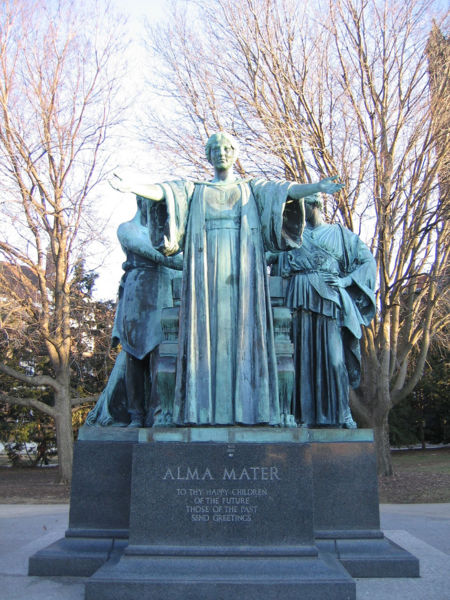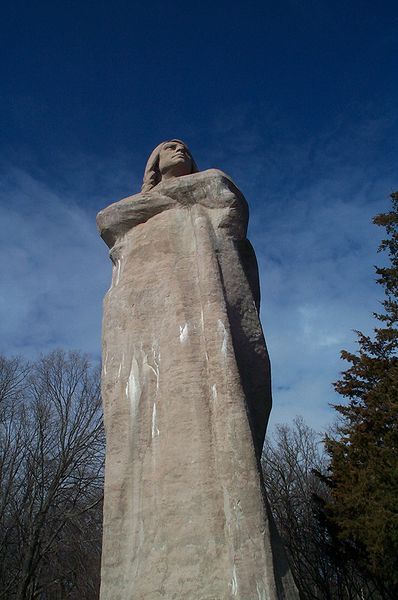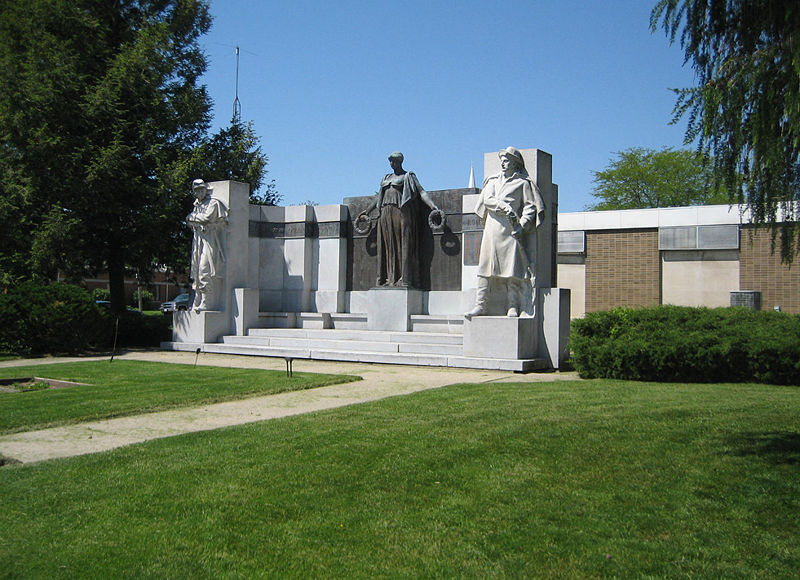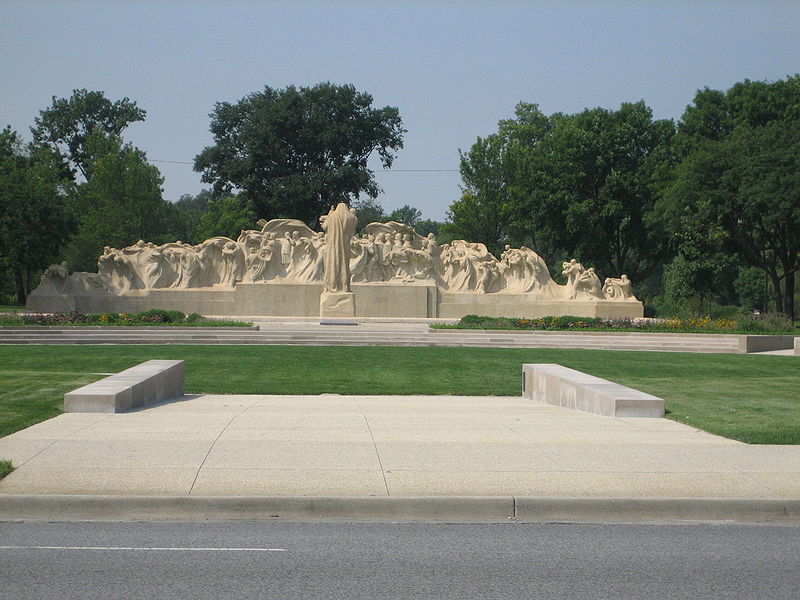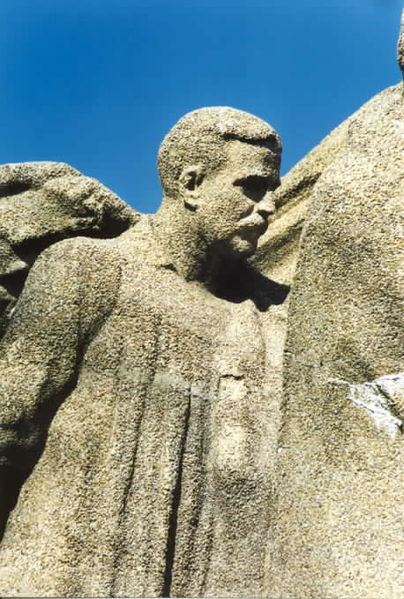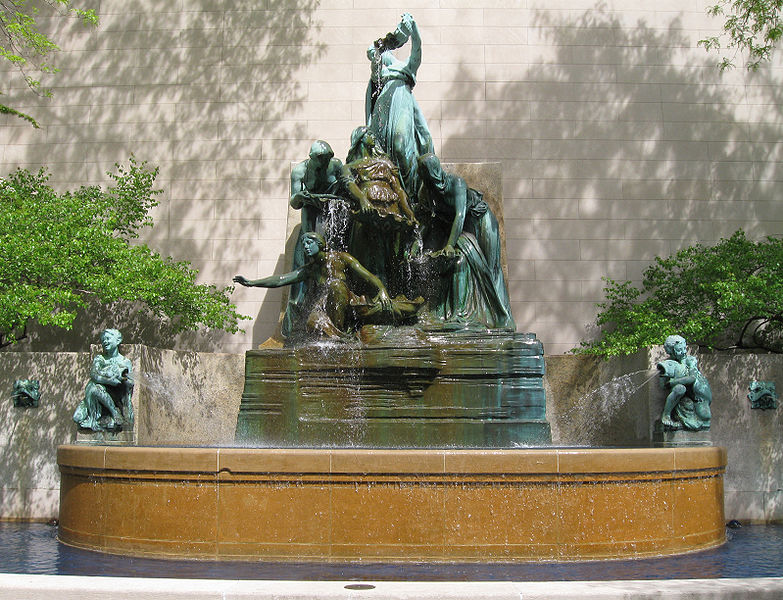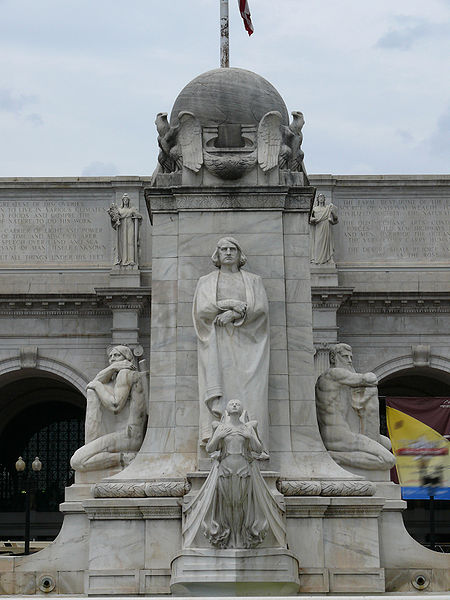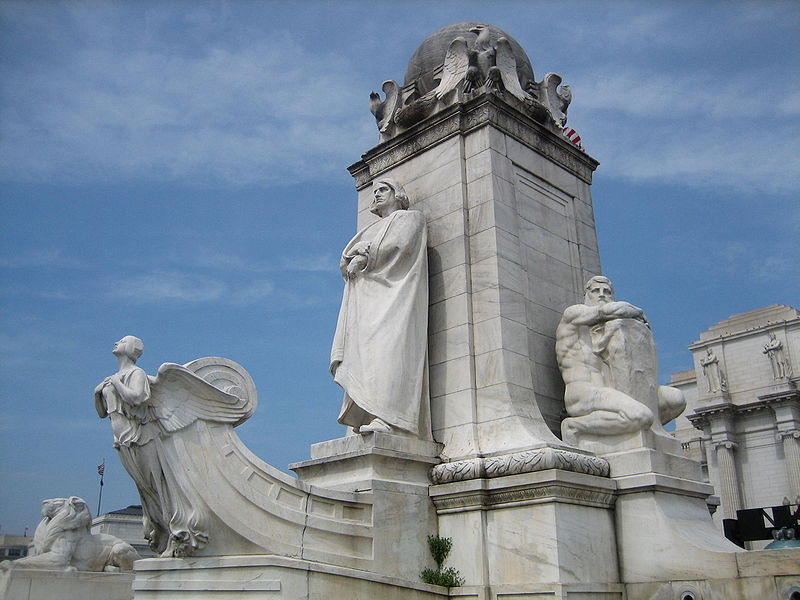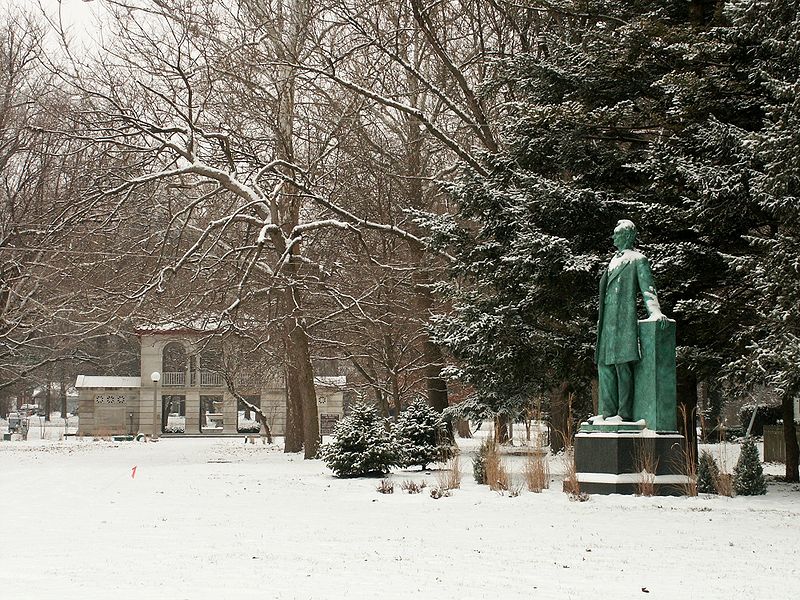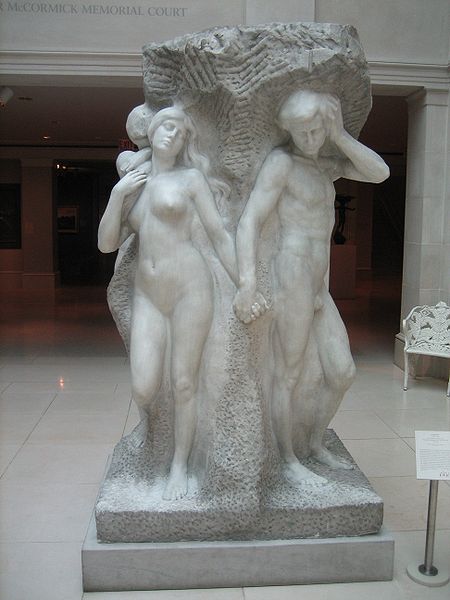<Back to Index>
- Physical Chemist Harold Clayton Urey, 1893
- Sculptor Lorado Zadoc Taft, 1860
- Shōwa Emperor of Japan Hirohito, 1901
PAGE SPONSOR
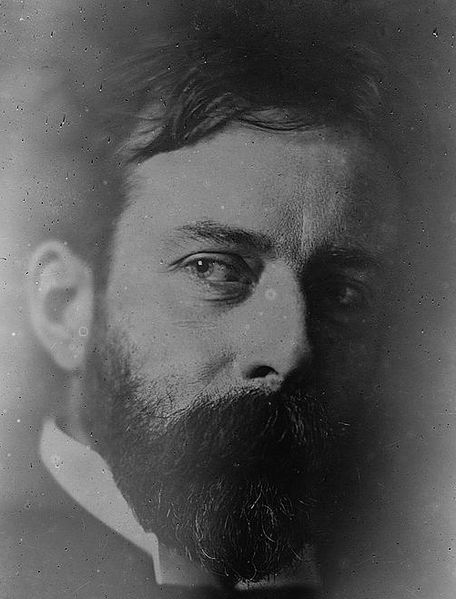
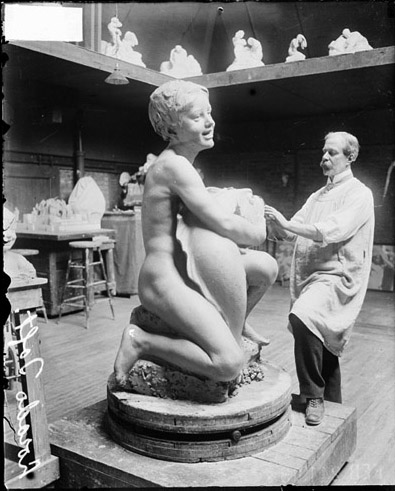
Lorado Zadoc Taft (April 29, 1860 – October 30, 1936) was an American sculptor, writer and educator. Taft was born in Elmwood, Illinois, in 1860 and died in his home studio in Chicago in 1936.
After being homeschooled by his parents, Taft earned his bachelor’s degree (1879) and master’s degree (1880) from the University of Illinois where his father was a professor of geology. The same year he left for Paris to study sculpture, he continued to maintain his connections with the university in Urbana and his sculpture of Alma Mater at Urbana has come to symbolize something significant.
In Paris, Taft attended the Ecole des Beaux-Arts where he studied with Augustin Dumont, Jean-Marie Bonnassieux and Jules Thomas. Upon returning to the United States in 1886 he settled in Chicago. He taught at the Art Institute of Chicago, a post he was to remain at until 1929.
In 1892, while the art community of Chicago was in a-twitter preparing for the World's Columbian Exposition of 1893, chief architect Daniel Burnham expressed concern to Taft that the sculptural adornments to the buildings might not be finished on time. Taft asked if he could employ some of his female students as assistants (it was not socially accepted for women to work as sculptors at that time) for the Horticultural Building. Burnham responded with the classic reply, ‘Hire anyone, even white rabbits if they’ll do the work." From that arose a group of talented women sculptors who were to retain the name "the White Rabbits." These included Enid Yandell, Carol Brooks MacNeil, Bessie Potter Vonnoh, Janet Scudder, and Julia Bracken. Later another former student, Francis Loring, noted that Taft used his students’ talents to further his own career, a not uncommon observation by students regarding their teachers. In general, history has given Taft credit for helping to advance the status of women as sculptors.
In 1898, he was a founding member
of the Eagle's
Nest
Art Colony. In 1903
Taft published The
History of American Sculpture, the first survey of the subject. In
some settings, Taft is perhaps better known for his published writings
than for his sculpture. The revised 1925 version of this text was to
remain the standard reference on this subject until Wayne Craven
published "Sculpture in America" in 1968. As Taft
grew older, his eloquent speaking skills and compelling writing led
Taft, along with Frederick
Ruckstull, to the forefront of sculpture’s conservative ranks,
where he often served as a spokesperson against the modern and abstract
trends which developed in sculpture during his lifetime. Taft's
frequent lecture tours for the Chautauqua also gave him a broad,
popular celebrity status in this period. In 1921,
Taft published Modern
Tendencies
in Sculpture, a compilation of his lectures given at the
Art Institute of Chicago. The book continues to be regarded as an
excellent survey of American sculpture in the early years of the 20th
century; and it offered a distinct perspective on the development of
European sculpture at that time. Among
other honors, Taft's accomplishments were recognized by his election to
the National
Institute
of Arts and Letters (now
known
as the American
Academy
of Arts and Letters). He was active until the end of his
life. The week before he died, he attended the Quincy,
Illinois, dedication
ceremonies for his sculpture celebrating the Lincoln-Douglas
debates.
